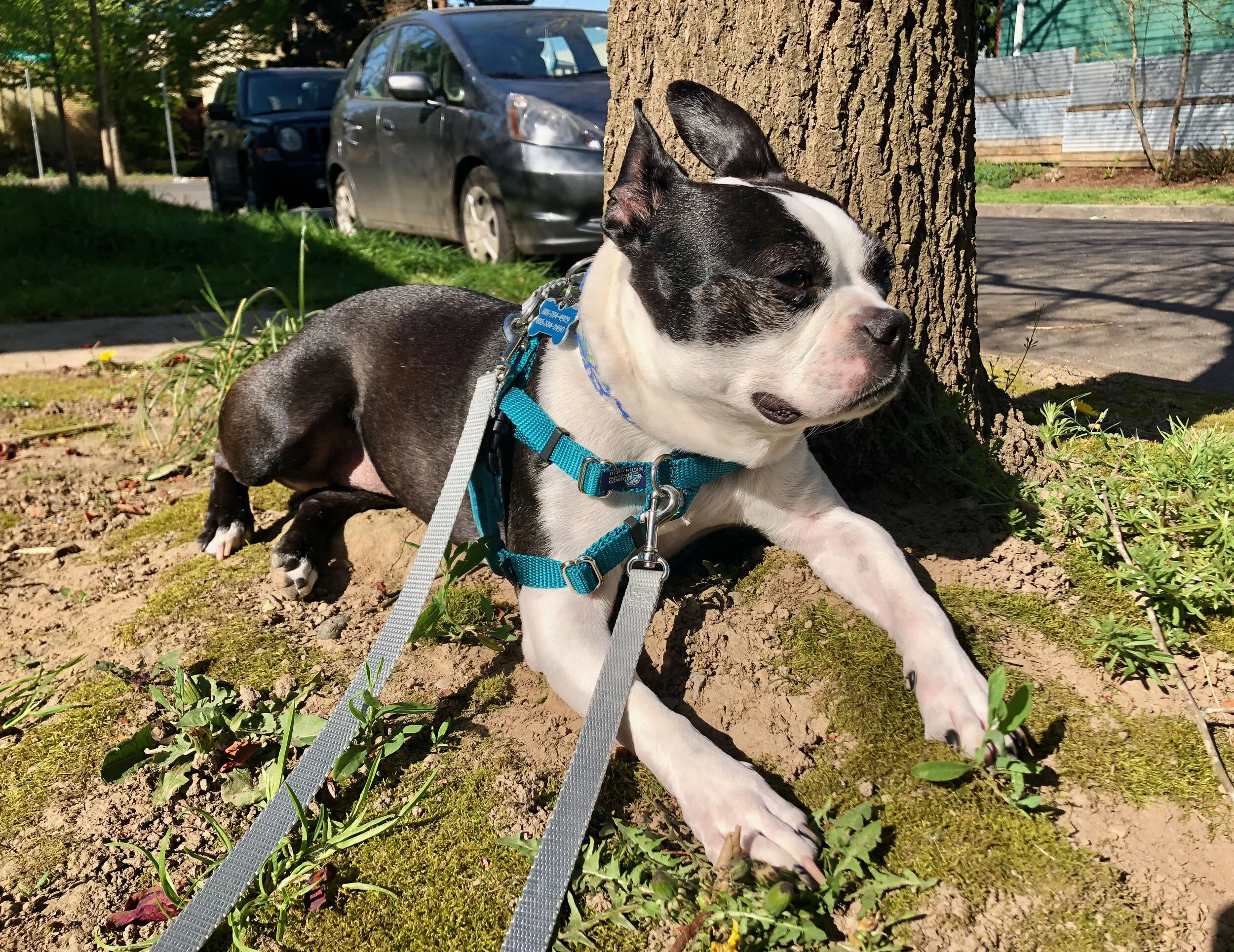The most challenging aspect of raising our Lilly, the Boston terrier, is facing the fact that my wife, Susan, and I have a special-needs fur child.
We knew little of Lilly’s life before us, but what we did know spoke volumes. She’d been neglected, cast out among her former canine family members to vie for resources and ultimately dumped for “pooping too much.”
When we brought her home eight years ago, she growled and spun at the distant sight of an unfamiliar dog. After much professional and self-directed desensitization training, we’d cut Lilly’s reactive radius to about 25 feet. Much better, but not enough for her to peacefully share the same sidewalk.
Our relocation from Southern California to Northern Oregon last October capsized Lilly’s life. She lost her canine friends; touchstone scent markers and scenes vaporized. Lilly needed to find an anchor in her new home in the thick of COVID, with winter quickly approaching.
Lilly regressed. Her fear-based aggression erupted at greater distances between her and other dogs. We re-enlisted professional training in earnest. Lilly’s reactive perimeter shrunk to its previous limit, then stalled. At the trainer’s suggestion, we consulted a veterinary behaviorist to help us scale Lilly’s behavioral hump.
The behaviorist took a history and observed Lilly on-line for 90 minutes. Afterwards, she suggested that under-socialization during a critical time in Lilly’s development could be the cornerstone of her fear-based aggression toward other dogs. Lilly’s insecurity as an adult dog may be triggered by several factors. The physical restraint of the leash precludes her ability to control the social distance by either taking evasive action or greeting on her own terms. Our anticipation of tense encounters may be transmitted through the leash like electrical signals through a cable. A genetic wildcard could also be in play.
Lilly expressed her pent-up anxiety by growling, spinning, barking or lunging — all designed for one purpose: make the unwanted threat disappear.
With COVID restrictions lifting and summer approaching, we wanted to bolster Lilly’s chances for social success (or, at the very least, tolerate dogs at close range). In concert with Lilly’s professional training, the vet recommended that we try a pheromone collar and a daily probiotic supplement to reduce stress. If we didn’t see significant change in 30 days, we were encouraged to consider a pharmacological solution.
Susan sighed in relief at this fallback option. I froze. Visions of Lilly sprawled listless on the couch — bloodshot eyes, no interest in fetching her furry chicken — swam in my head. She may have no reaction to other dogs, but, loaded on Prozac, would she even recognize other dogs?
How quickly I forgot about someone else who needed drugs to function. Twenty-five years ago, I shuddered at the thought of getting my masters in communication disorders and sciences. Cognitive behavioral therapy helped, to a point. An epic meltdown on the eve of my first clinical practicum opened my heart to medicinal assistance. From that day forward, I donned my cape of happy neurotransmitters and flew through my career as Prozac Man.
I did not become a zombie. Dose adjustments and complimentary meds combated sleepiness. The sharp fangs shaved off my old demons, I could effectively man the controls of my life.
Self-talk and existential reflection alone were insufficient to ferry me through career change. Because Lilly doesn’t share these skills, I can’t imagine the distress she feels each time a perceived threat rounds the corner toward her.
Why on earth would I deny her a path to peace I myself have walked?
Follow Lilly’s behavioral breakthroughs next week in Part 2. Thanks for reading.

